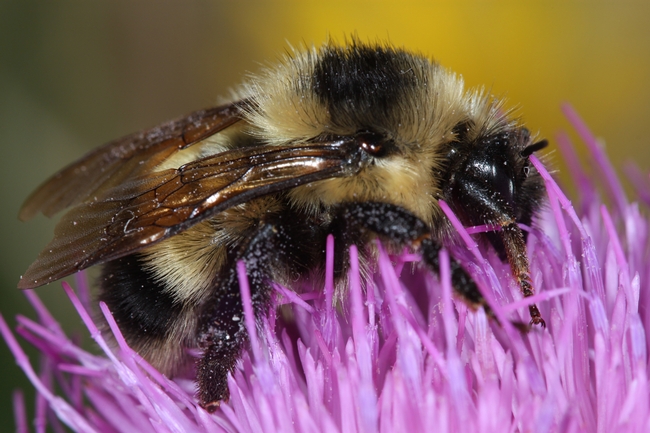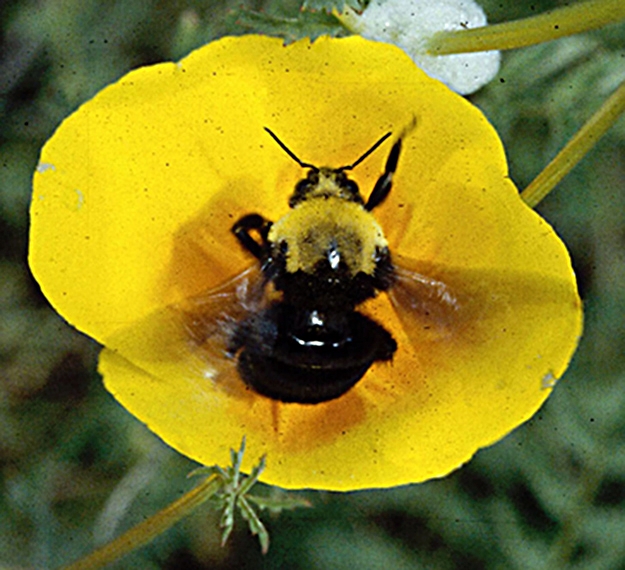It's good to see University of California scientists pursuing rare bumble bees.
The latest news on the bumble bee front: UC Riverside scientists recently rediscovered "Cockerell's Bumble Bee" (Bombus cockerelli Franklin), considered "the rarest of the rare" species of bumble bee in the United States.
It hadn't been seen since 1956. Then, on Aug. 31, 2011 UC Riverside scientists collected the species on weeds along a highway north of Cloudcroft in the White Mountains of south-central New Mexico.
In a Dec. 5th press release, UC Riverside senior museum scientist Douglas Yanega told senior public information officer Iqbal Pittalwala: "Most bumble bees in the U.S. are known from dozens to thousands of specimens, but not this species. The area it occurs in is infrequently visited by entomologists, and the species has long been ignored because it was thought that it was not actually a genuine species, but only a regional color variant of another well-known species."
Fast-forward to UC Davis Department of Entomology where native pollinator specialist Robbin Thorp, emeritus professor of entomology, is pursuing the critically imperiled--and maybe extinct--Franklin's bumble bee (Bombus franklini Frison).
Thorp hasn't seen Franklin's bumble bee since 2006. Its range is a 13,300-square-mile area in Siskiyou and Trinity counties in California, and Jackson, Douglas and Josephine counties in Oregon. Up until now, its habitat was thought to be the smallest of any other bumble bee in the world.
Yanega believes that the range of the Cockerell's bumble bee is the smallest in the world. It's less than 300 square miles, he says.
Davis bumble bee enthusiast Gary Zamzow (he studies and photographs bumble bees and is a volunteer in the Häagen-Dazs Honey Bee Haven at UC Davis), says the latest find is "an exciting discovery and encouraging news. Gives one hope in finding lost bumble bees."
And an interesting note: Henry James Franklin (1883-1958), who monographed the bumble bees of North and South America in 1912-13, named both of them. Franklin named Cockerell's bumble bee for Theodore Dru Allison Cockerell (1866-1948).
Attached Images:

Cockerell’s bumble bee. (Photo by Greg Ballmer, UC Riverside)

The criticallly imperiled Franklin's bumble bee. (Photo by Robbin Thorp, UC Davis)